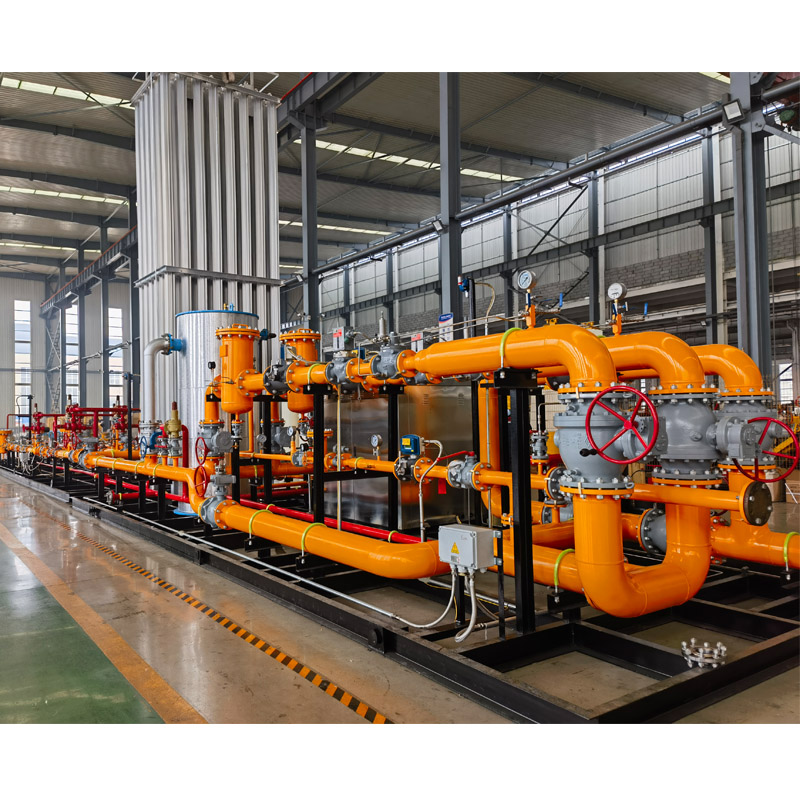
Nov . 09, 2024 01:53
Back to list
Natural Gas Safety Valve for Efficient Gas Management and Protection
The Importance of Natural Gas Safety Valves
Natural gas has become an essential energy source worldwide due to its efficiency and relatively lower environmental impact compared to other fossil fuels. However, with this significant reliance comes the critical need for safety measures to prevent accidents and ensure the integrity of gas systems. One of the most crucial components in this regard is the safety valve, specifically designed for natural gas applications.
A natural gas safety valve is a mechanical device that automatically releases gas from a pressurized system whenever the pressure exceeds a predetermined threshold. This release prevents potential hazards such as explosions, fires, or catastrophic system failures. The functioning of safety valves is primarily governed by the principles of pressure regulation and system integrity.
Functionality of Safety Valves
The primary function of a natural gas safety valve is to act as a protective device. In a typical gas system, various factors such as temperature fluctuations, equipment malfunction, or sudden increases in demand can lead to excessive pressure buildup. Without safety valves, this pressure can lead to ruptures, leaks, or even explosions, posing severe risks to both life and property.
Safety valves are designed to operate automatically. This means they engage as soon as the pressure in the system exceeds a set limit, allowing excess gas to escape safely into the atmosphere or redirecting it to another part of the system where it can be handled more safely. This automatic response is crucial because it eliminates the need for manual intervention during critical situations, where time is of the essence.
.
There are several types of safety valves used in natural gas systems, each designed to cater to specific requirements
صمام أمان الغاز الطبيعي

1. Relief Valves These are designed to release gas at a specific pressure to ensure the system does not exceed safety limits. 2. Safety Relief Valves These devices can handle both liquid and gas, allowing for a broader range of applications and helping to manage diverse pressure scenarios.
3. Pressure Safety Valves Often utilized in industrial applications, these valves ensure that pressure remains within safe operational limits.
4. Emergency Shut-off Valves (ESVs) While primarily designed to prevent the flow of gas during emergencies, ESVs function in a similar capacity to safety valves by managing pressure.
Importance of Regular Maintenance
Like any mechanical device, natural gas safety valves require regular maintenance and testing to ensure reliability. Over time, wear and tear can affect their performance, leading to malfunction and increased risk. Regular inspections and maintenance procedures should include verifying calibration settings, checking for leaks, and replacing worn parts. Such diligence not only enhances safety but also improves the overall efficiency and reliability of the gas system.
Conclusion
In summary, natural gas safety valves are indispensable components that play a vital role in protecting both individuals and infrastructure from the inherent dangers of gas systems. Their automatic operation, combined with regular maintenance and appropriate safety measures, helps mitigate risks associated with excessive pressure. As the world continues to depend on natural gas as a primary energy source, understanding and implementing effective safety protocols, including the use of safety valves, will remain a top priority. The future of energy lies not only in efficiency but also in safety, making the adoption of advanced safety technologies essential for sustainable development.
Latest news
-
Safety Valve Spring-Loaded Design Overpressure ProtectionNewsJul.25,2025
-
Precision Voltage Regulator AC5 Accuracy Grade PerformanceNewsJul.25,2025
-
Natural Gas Pressure Regulating Skid Industrial Pipeline ApplicationsNewsJul.25,2025
-
Natural Gas Filter Stainless Steel Mesh Element DesignNewsJul.25,2025
-
Gas Pressure Regulator Valve Direct-Acting Spring-Loaded DesignNewsJul.25,2025
-
Decompression Equipment Multi-Stage Heat Exchange System DesignNewsJul.25,2025

